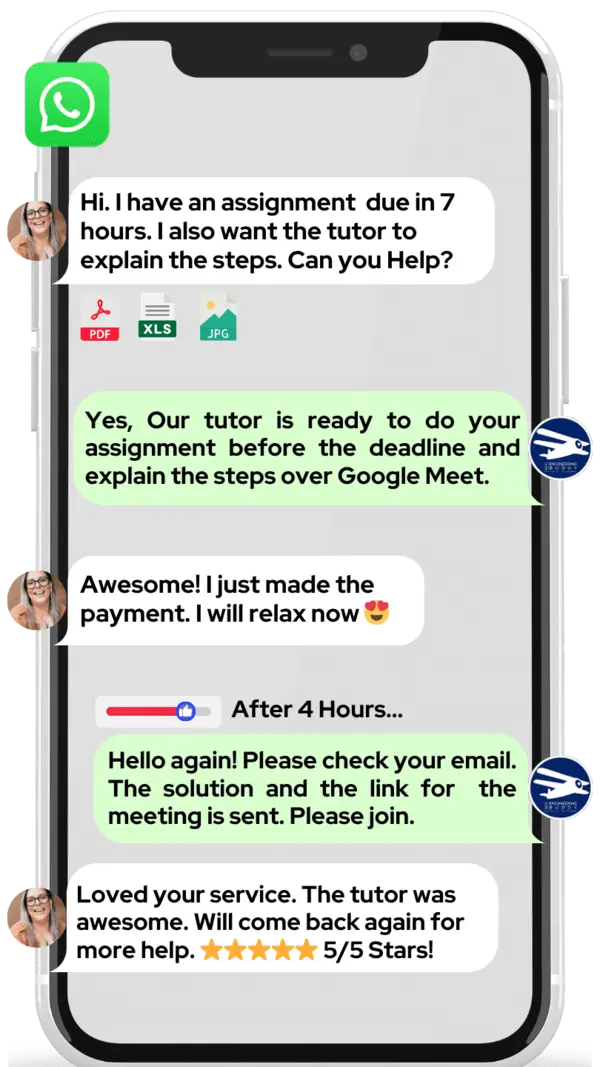

Hire The Best Nagios Tutor
Top Tutors, Top Grades. Without The Stress!
10,000+ Happy Students From Various Universities
Choose MEB. Choose Peace Of Mind!
How Much For Private 1:1 Tutoring & Hw Help?
Private 1:1 Tutors Cost $20 – 35 per hour* on average. HW Help cost depends mostly on the effort**.
Nagios Online Tutoring & Homework Help
What is Nagios?
Nagios is an open‑source monitoring tool designed to oversee servers, networks, and applications in Information Technology (IT). It provides real-time alerts for outages, performance bottlenecks and failures. Using customizable plugins, Nagios can track CPU load, disk usage and service availability, helping admins prevent downtime and ensure system reliability.
Popular alternatives: • Icinga • Zabbix • Centreon • Sensu • Prometheus
Major topics in Nagios encompass system architecture, plugin development and configuration management. A typical setup involves the Nagios Core engine, which schedules checks and processes results. Then there are plugins—small programs that verify service status or resource usage. Notification methods (email, SMS) alert teams. Performance tuning and security hardening ensure stability. Distributed monitering setups let regional teams watch local servers. The Nagios Web GUI shows live dashboards. Integrations via API (Application Programming Interface) connect to ticketing systems. Real life example: using a custom MySQL plugin to warn when a database exceeds 80% storage – crucial for web shops.
In 1999 Ethan Galstad wrote the initial code as “NetSaint,” aiming to solve simple network monitoring needs at a tech startup. By 2002 the name changed to Nagios (Nagios Ain’t Gonna Insist On Sainthood). A thriving community began submitting plugins and patches. In 2004 community contributions led to the first commercial add‑on. 2009 saw Nagios XI launched, offering a GUI and simplified setup. That same year the Icinga fork emerged, splitting development. Version 4 of Nagios Core arrived in early 2015 with performance boosts. Since then, dozens of new plugins, integrations and community events have kept Nagios at the forefront of infrastructure monitoring.
How can MEB help you with Nagios?
Do you want to learn Nagios? We at MEB offer one-on-one online Nagios tutoring. Our tutor will work with you step by step.
If you are a school, college, or university student and need help with assignments, lab reports, live tests, projects, essays, or big research papers, you can use our 24/7 Nagios Homework Help service.
You can chat with us on WhatsApp any time. If you don’t use WhatsApp, send us an email at meb@myengineeringbuddy.com. Many of our students come from the USA, Canada, the UK, the Gulf, Europe, and Australia.
Students ask for help when the subject is hard, assignments are too many, or questions and ideas are confusing. Sometimes health or personal issues, part-time work, or missed classes make it hard to keep up.
If you are a parent and your student is struggling, contact us today. Our tutor will help your ward score top marks in exams and homework. They will thank you for it.
MEB also supports over 1000 other subjects with expert tutors. Getting help when you need it makes learning easier and school life less stressful.
DISCLAIMER: OUR SERVICES AIM TO PROVIDE PERSONALIZED ACADEMIC GUIDANCE, HELPING STUDENTS UNDERSTAND CONCEPTS AND IMPROVE SKILLS. MATERIALS PROVIDED ARE FOR REFERENCE AND LEARNING PURPOSES ONLY. MISUSING THEM FOR ACADEMIC DISHONESTY OR VIOLATIONS OF INTEGRITY POLICIES IS STRONGLY DISCOURAGED. READ OUR HONOR CODE AND ACADEMIC INTEGRITY POLICY TO CURB DISHONEST BEHAVIOUR.
What is so special about Nagios?
Nagios stands out as a simple but powerful tool for watching over servers and applications. It’s open source, so anyone can see how it works and add custom checks. It has a flexible plugin system that lets you monitor almost anything. Its active community shares ideas and extensions, making it easy to adapt to different environments without starting from scratch.
Compared to commercial monitoring solutions or other open tools, Nagios costs nothing to start but still offers deep insight into system health. Its large library of plugins beats many rivals on flexibility. However, it can be harder to set up and configure than newer tools with modern interfaces. Scaling requires more effort and extra tools, and its default dashboard looks dated.
What are the career opportunities in Nagios?
Many universities and online academies now offer advanced courses in IT infrastructure monitoring that include Nagios alongside cloud and container monitoring tools. You can pursue specialized certifications such as Nagios Certified Administrator or integrate Nagios study into broader DevOps and Site Reliability Engineering (SRE) master’s programs. These paths teach you to design scalable, resilient monitoring systems for modern networks and hybrid cloud environments.
In today’s job market, expertise in Nagios opens doors to roles in network and system administration, DevOps engineering, cloud operations, and SRE positions. Companies of all sizes—from startups to large enterprises—need professionals who can ensure uptime, detect outages before they impact users, and maintain security through constant system checks.
Common job titles include Nagios Administrator, DevOps Engineer, Monitoring Specialist, and SRE. Daily work involves installing and configuring Nagios servers, writing custom plugins or scripts, setting threshold alerts, integrating with ticketing systems, and analyzing logs to prevent downtime.
Studying Nagios helps you build proactive monitoring skills that are critical for reliable IT services. Nagios is open source, highly customizable, and integrates with many third‑party tools. Its applications include server and network health checks, automated alerting, performance trending, and supporting containerized and cloud‑based infrastructure.
How to learn Nagios?
Start by setting up a Linux server or virtual machine, then install Nagios Core from the official packages. Follow these steps: 1) Install Apache, PHP and required dependencies. 2) Download and compile Nagios Core and Nagios Plugins. 3) Configure your first host and service definitions in the /usr/local/nagios/etc directory. 4) Start Nagios and open the web interface to see your monitored host. 5) Gradually add more hosts, services and notifications to build real-world monitoring scenarios.
Nagios isn’t too hard if you break it down. The basics—installing, adding a host and watching its status—are straightforward. Advanced features like custom plugins, event handlers and distributed monitoring take more time, but you can learn them step by step.
You can definitely learn Nagios on your own using free guides and practice labs. However, a tutor can speed up your progress, clear doubts fast and help you avoid common mistakes, especially when you hit tricky configuration issues.
Our MEB tutors offer 24/7 online 1:1 sessions to guide you through each setup, configuration and troubleshooting step. We also help with hands‑on assignments and real‑project simulations so you gain confidence soon.
Most students pick up the core concepts in 2–4 weeks with regular practice. To master advanced features and best practices, plan on 6–8 weeks of focused study and hands‑on labs.
Here are top resources for Nagios learning. On YouTube, try “Nagios Tutorial for Beginners” by Simba Tutorials and “Nagios Core Monitoring” by LearnLinuxTV. Visit the official docs at docs.nagios.org and practical tutorials on digitalocean.com. Take online courses on Udemy (search “Mastering Nagios”) and Pluralsight. Key books include Nagios Core Administration Cookbook by Tom Ryder, Learning Nagios 4 by David Josephsen and Nagios Network Monitoring by Wolfgang Barth. These guides cover installation, plugin development, alerts and real‑world examples.
College students, parents, and tutors in the USA, Canada, UK, Gulf and beyond: if you need a helping hand with online 1:1 24/7 tutoring or assignment support, our expert tutors at MEB can help at affordable rates.








